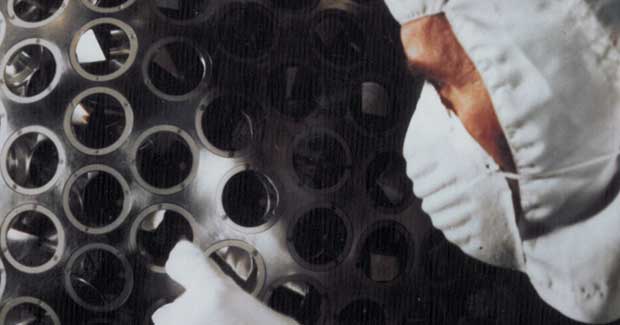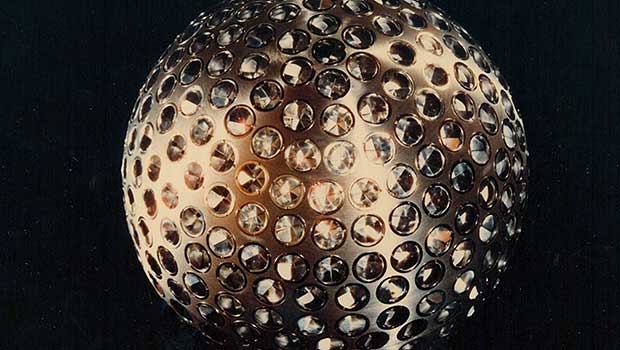Advertisement
40 Years Ago, NASA Put a Disco Ball in Space and It’s Still Floating Up There
| By Jason Owen
Advertisement - Continue reading below

For four decades, outer space has had some serious Saturday Night Fever.
On May 4, 1976, NASA scientists launched the LAGEOS satellite – short for Laser Geodynamics Satellite – from Vandenberg Air Force Base in California. For such an unassuming satellite, the LAGEOS would turn out to completely transform how scientists gathered data about the Earth, which had nothing to do with dancing.
The structure is simple compared to most NASA satellites. From Space.com:
“The 900-pound (408-kg) satellite has no onboard sensors, electronics or moving parts; it’s simply a brass core surrounded by an aluminum shell that’s covered in 426 retroreflectors.
“The retroreflectors, which reflect light with minimal scattering, made LAGEOS the first NASA orbiter to use a technique called laser ranging to take measurements. By sending light to LAGEOS and measuring how much time it took that light to bounce off the reflectors and make it back to Earth, NASA scientists could make measurements to millimeter-level precision of how far away LAGEOS was from the ground.”
Before LAGEOS, “laser-ranging” technology could only measure distances from the Earth’s surface to a satellite’s orbit – 3,600 miles above the Earth – to within an accuracy of three feet. LAGEOS brought that margin of error down to within half an inch.

Perhaps LAGEOS’ largest contribution to scientific research came in the ability to measure “small shifts in the Earth’s rotation that are caused by movement of mass in the atmosphere and oceans” as tectonic plates shift and move, Space.com wrote. In other words, LAGEOS has provided a whole new understanding on earthquakes.
“What had been missing was a way to measure the speed and direction of plate movement over time,” said Frank Lemoine, a geophysical scientist at NASA’s Goddard Space Flight Center.
In 1992, NASA launched LAGEOS-2, a sister satellite traveling in a complementary orbit to LAGEOS-1, which would help prove one of the predictions Einstein made in his general theory of relativity.
The two satellites together allowed a greater accumulation of data that showed small fluctuations in the satellites’ orbits aligned with a “frame-dragging” effect (essentially, that Earth’s spin warps space-time around it and “drags” nearby objects inward) that is lowering LAGEOS’ orbit by approximately one millimeter per day.
So, that big shiny disco ball in our night sky is going to keep on spinning until the “drag” brings it back down to Earth… in roughly 8.4 million years or so. Talk about a long Saturday night.
(h/t Space.com)
Advertisement - Continue reading below
Share
On Facebook
